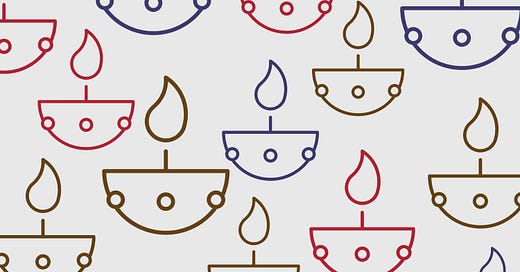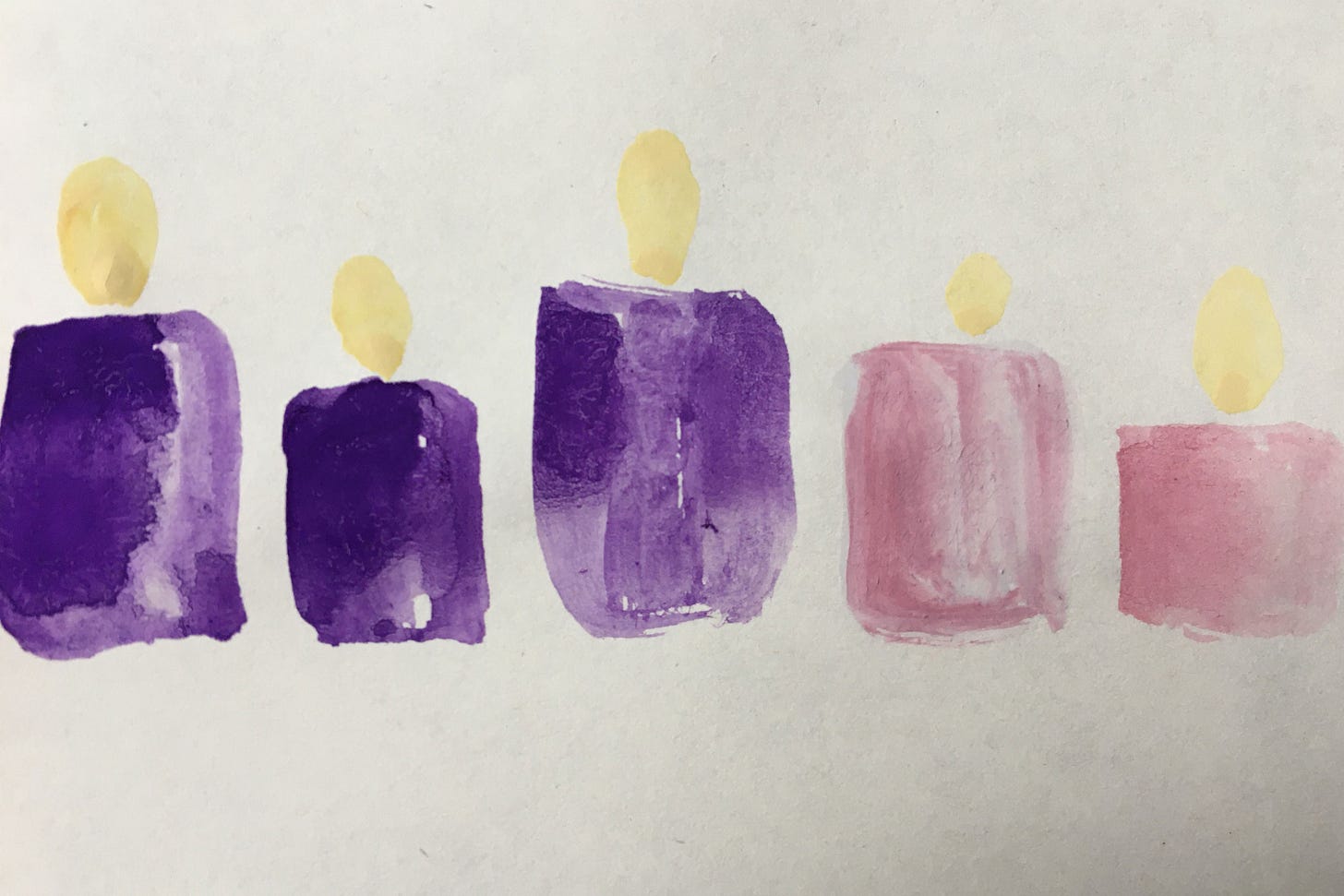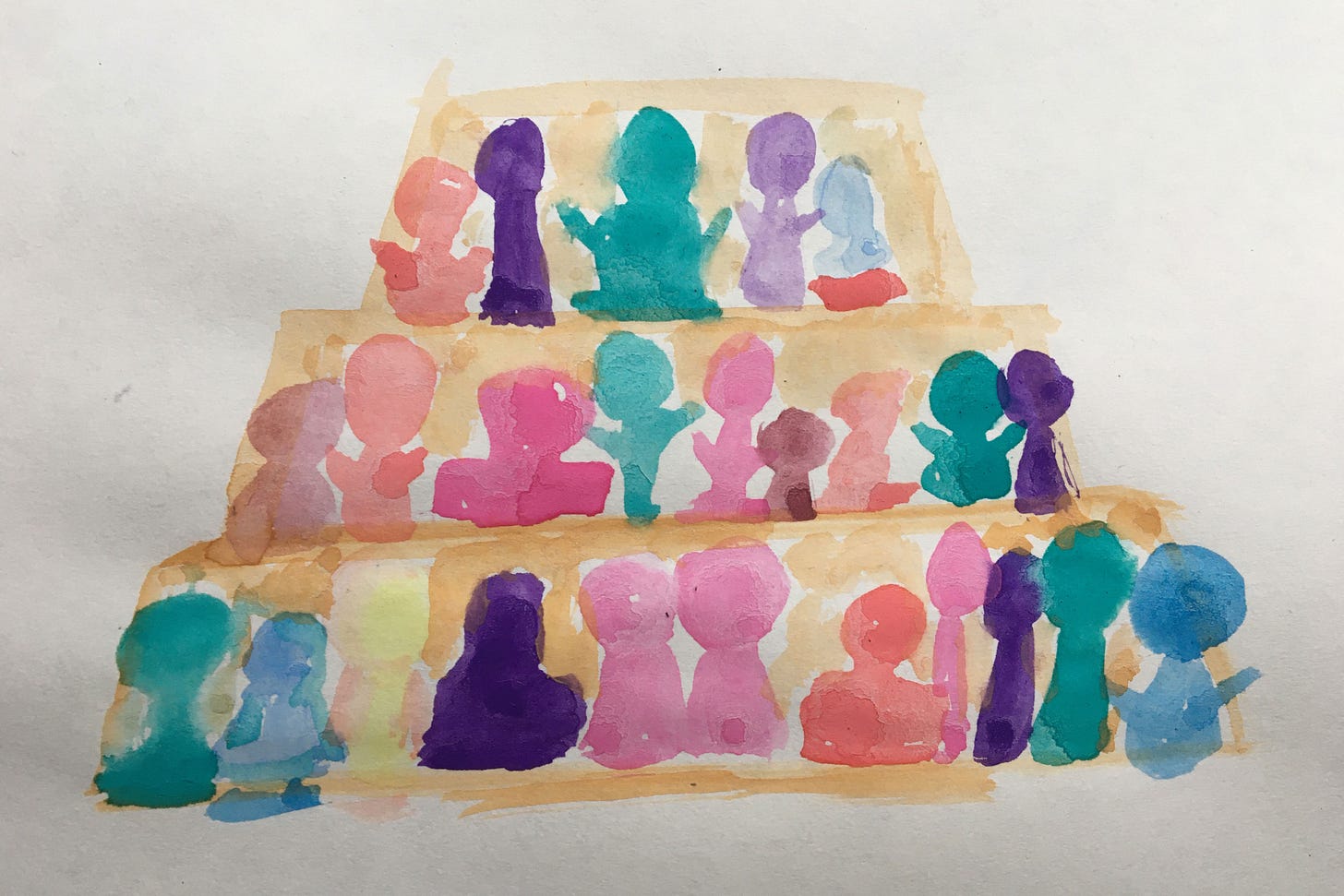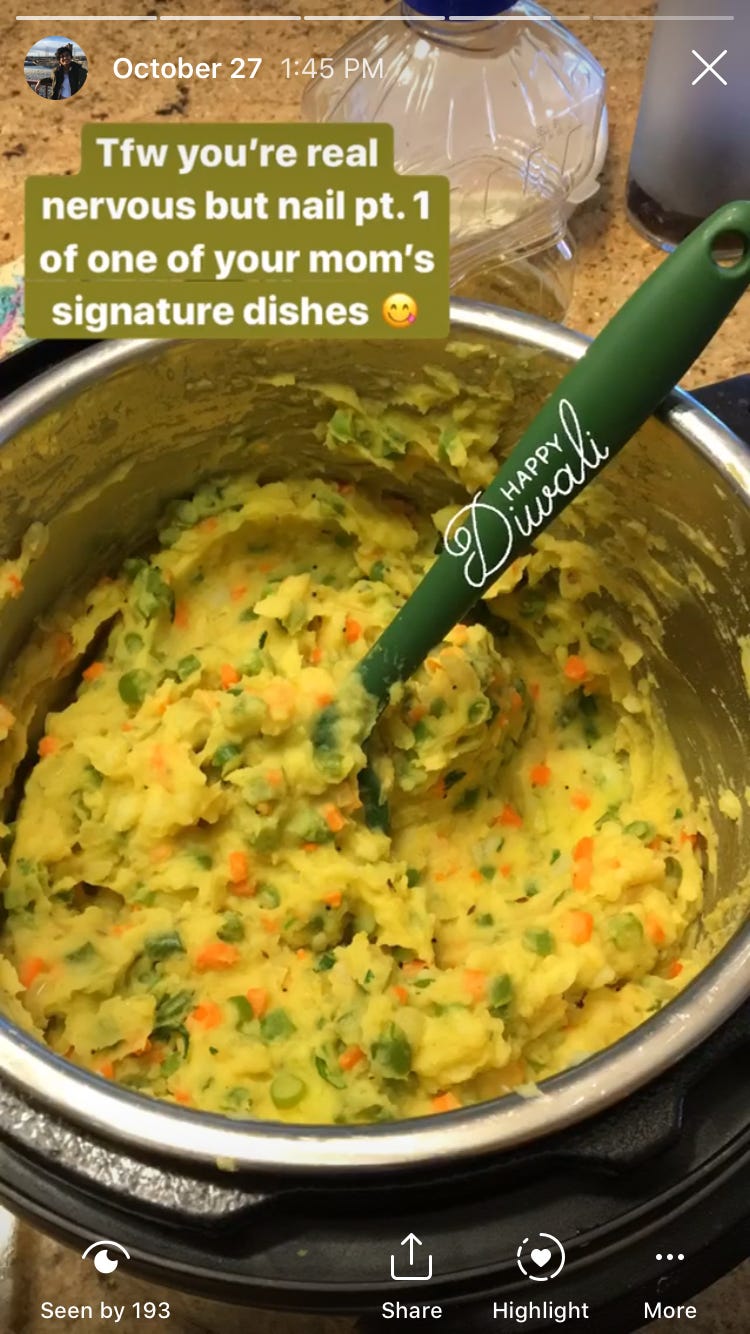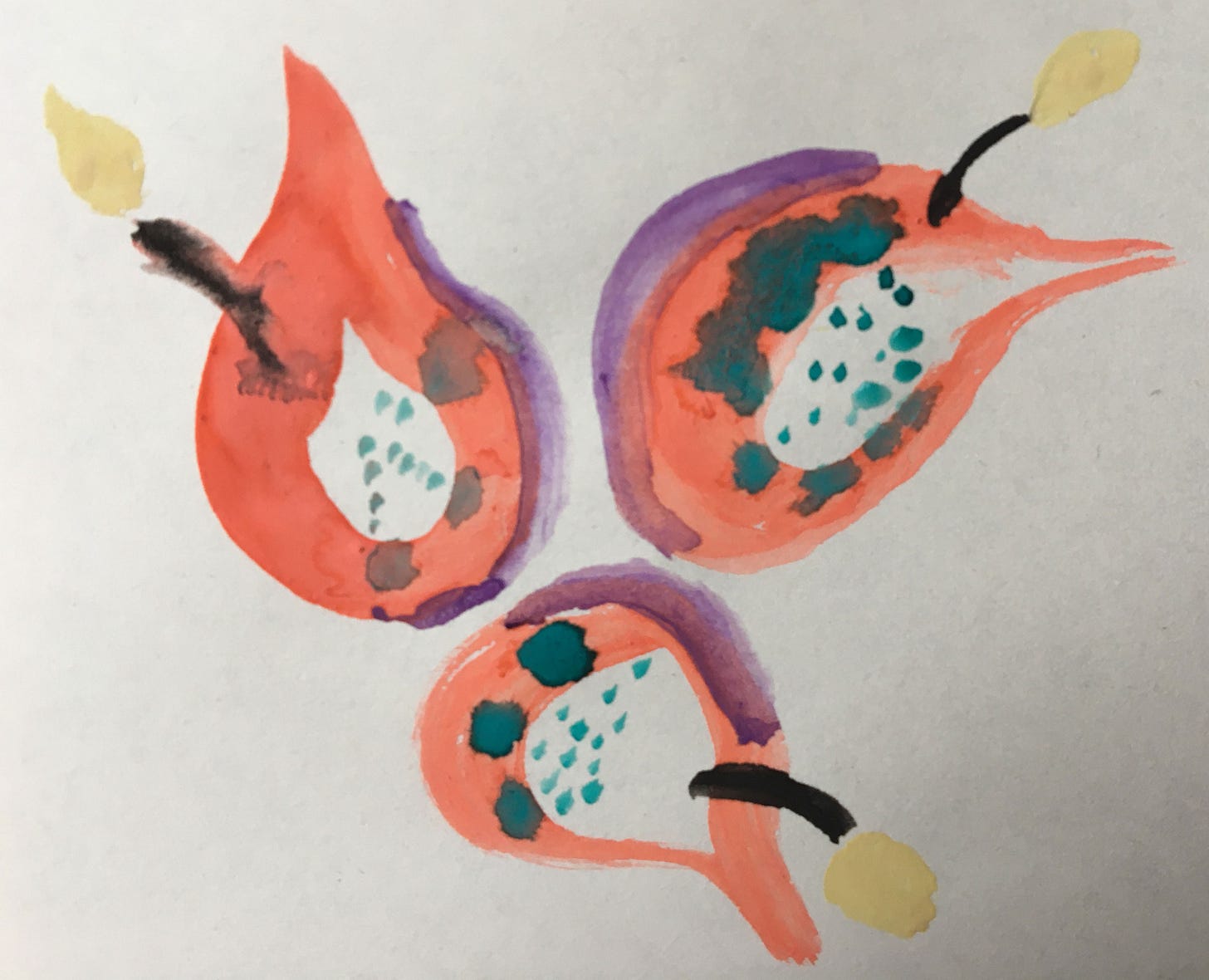Issue #8
Hi all,
Vignesh has kept this newsletter up beautifully. I’ve been cheering him on as a reader, and the time has come for me to introduce myself. I’m Beena Raghavendran. In early 2019, I reached out to Vignesh (who was then my coworker) to ask how I could help with his side project, Red, White and Brown. He graciously welcomed me aboard. Consider me his partner in melanin, though less involved than I’d like to be these days.
Oh, 2020. We blinked and it was Diwali. I was stuck in my Brooklyn apartment, trying to do it like Mom did. Racking my brain. When was the last time I was home for Diwali with my mom? Age 17? I did what felt right: cleaned my apartment, cooked an elaborate meal two nights in a row. Tried to feel something. Then I re-read this essay I wrote last year about the holiday. I cringed.
It’s a strange thing, isn’t it, reading back over old writing? I mourned skills I’d lost. I used to take such pride in the perfect sentence, finding just the right word. I’d written beautiful feature stories in college and earlier in my journalism career. Well, I thought they were beautiful. This essay felt clumsy. Too many adverbs. Overstuffed sentences. I should have known better.
Slowly, I backpedaled. I’m trying to be kinder to myself this year. It’s a process. Thanksgiving is around the corner. Jingle bells in the distance. I see the Diwali essay for what it is: A time capsule. In the moment, 2019 was so complicated. But it was simpler than I could have known.
We’re not perfect, especially not now (I will spare us another usage of the “in these unprecedented times” line). Even without sunlight, we grow. I grew. Much of it from sitting right here at my laptop this year, and writing, rewriting, rewriting. Whichever spot of your home you’re in right now, I hope you find peace. Just like I did in this essay on the first go. Just like I did as I reread it, as we get ready to celebrate an equally weird Thanksgiving.
Yours in imperfection,
Beena Raghavendran (@thebeenster)
Co-founder of Red, White and Brown Media
Beena’s essay originally published on Red, White and Brown’s Medium site on Nov. 22, 2019:
What I learned when I used vacation time to celebrate Diwali, my family’s most important holiday, for the first time ever
I expected good food and fancy clothes. I didn’t expect to understand so much about my family and my identity.
This year, I took a long weekend to spend Diwali at my parents’ house. It meant four whole days off work and a plane ticket to Ohio.
It was the first time that I took vacation days and spent money on travel home for a Hindu holiday. It’s not that I hate holidays. I love them. I’ve traveled to celebrate multiple New Years, Presidents’ Days, Thanksgivings, July Fourths, Labor Days and Memorial Days, a Christmas and even a Good Friday/Easter. But I never traveled once for any of the Hindu holidays my parents grew up celebrating with my sister and me.
In the days leading up to my trip, people I told about my travels would ask me what we usually do for Diwali in my family.
Well.
I had a lame answer to this, because it was mostly a guess: eat lots of good food and buy new clothes. My answer’s better now. Deeper. After years of grappling with my Indian American identity — but particularly so this year — I feel more at peace with one more string of it.
I remember celebrating Diwali quite unenthusiastically as a kid, as is probably common sentiment among most of the children I grew up with in suburban Cincinnati. It’s the festival of lights, the triumph of good over evil, and it’s as important to Hindus as Christmas is to Christians. But Diwali is inconveniently placed on an American calendar. It falls in mid-to-late October or early November every year, meaning it misses summer vacation season and comes just before the American holiday season kicks off around Thanksgiving.
Children of immigrants can only celebrate holidays like Diwali in a fraction of the way our parents remember growing up with it. The way my dad tells it, in India, he and his siblings would wake up before dawn to shoot off firecrackers, then put on new outfits, fill their bellies with a nice home-cooked meal and, once exhaustion set in during the afternoon, they’d snooze away the rest of the day.
Here in the U.S., in between school and after-school activities as a kid, I found a few minutes for Diwali. I’d put on new clothes to head to school, still fragrant with that fresh-from-store scent. I’d sit through dinner parties in Indian clothes with family friends. I’d squeeze in time to eat the pooris my mother would hand-make for us with piping hot potato subji in between homework and everything else that happens on fall weekdays. A few times, we’d light up sparklers and firecrackers in someone’s backyard on a chilly night.
I didn’t get Diwali, maybe because I was being obtuse and not accepting my culture, or maybe because not giving children time off school and activities to celebrate means that holidays will, by default, be abbreviated.
—
An American sky on Diwali is black when the sun goes down, except for a few non-celebratory flickers of stars and airplanes.
An Indian sky on Diwali explodes with light and color. Cities deck the blackness with fireworks, firecrackers and anything else that shoots color and light into darkness.
I hear the way my cousins talk about Diwali. And the way India seems to shut down for it, to honor the bright lights and good vibes the holiday is supposed to spread everywhere. My own parents reminisce with longing for the holiday they knew.
I can’t imagine what it’s like for these adult immigrants to have this image of your favorite holiday and then try to explain it to your kids on a weeknight, and ask them to put their phones down and pull on fancy clothes, and acknowledge that they’re maybe too tired or immature to really get it in the moment. I can’t imagine what it’s like to look out at the dark fall sky and realize you can’t see the fireworks. It’s just darkness.
So these adults make the light. They physically light candles and diyas but also bring in boxes of firecrackers and sparklers to light in the backyard. They pull on new, bright clothes. They hang up Christmas lights a couple months before their neighbors traditionally will.
—
Identity’s a funny thing. I repelled from my culture several times as a child when I was closest to its source — my parents — for fear of seeming too different and weird. Then I pulled far away from what I knew, to a college out of state. And I started to crave culture: The food, the community back home. There were traditions I didn’t even consider traditions that I missed.
For the first time in my life, when I went to college, I didn’t celebrate the fall Hindu holidays, Diwali and Navaratri, a nine-day festival that comes right before Diwali. In other parts of India, the holiday is celebrated with garba, or a big dance, and that’s how my university’s Indian Student Association did it, as a full-on party in our student union. But back home, my mom observed it the way her family always did in South India: A nine-day doll festival, called Golu. She invited all her friends over, and we’d sit cross-legged on the floor near a set of wooden steps with dolls carefully dusted and placed on top, chatting and exchanging gifts and food. I didn’t think I’d miss that as much as I did.
You think you’re doing just fine and then identity pops out again, trying to be found.
I started to reclaim Diwali my way in my late teens, my first time being far from home and my first reckoning with who I am and what my culture meant. In college, I’d plan special trips to the mall around Diwali, mostly because my parents insisted that I have something new to wear on the day of. When I moved to Minnesota and spent a few Diwalis as a working young professional, I made a new tradition for myself: Make an Indian meal and watch a Bollywood movie in my apartment. This solitary celebration started including driving to a temple, and sending a new outfit to my sister each holiday.
Then, last year, my first fall in New York City, the holiday fell on midterm election day: Nov. 7. So I honored it belatedly the next day and over the weekend, including a trip to Manhattan’s Little India for a sweets pickup. This year, as my family made plans to reunite over the holiday, I wondered if I was putting too much pressure on a first Diwali at my parents’ house since I was a kid, this holiday that I wanted to get to know but felt like I didn’t really know yet. Then, when the family meetup fell through, it became clear it’d just be me and my dad at home for Diwali. And the questions continued: What would this holiday actually be like?
—
On the afternoon of Diwali, I padded around my kitchen, trying desperately to perfect the mashed potato masala my mom uses as a filling for her signature savory puff pastry dish — her go-to party appetizer for decades. She was out of town and I was forging ahead, blindly, in her kitchen.
A dash of salt here, and a strong stir into the potato filling. Better. Now, a kick of lime juice, some coriander powder I dug out from the side of the freezer, where it was sitting to keep fresh. A few cilantro leaves for that fresh flavor. More salt. Ginger! A taste — good, better. More lime juice, though.
This kitchen concocting came on the heels of a simple but taxing cooking marathon the day before: I’d prepared more of my mom’s easy dishes for my dad and me. And spent most of the previous day shopping for a Diwali outfit for my sister.
I eyed the clock on Diwali day as the hours ticked closer to the start of a party at a friend’s house. I had Netflix blaring in the background and paused to concentrate fully on flavor.
But instead, I sunk into time-travel. I pictured my mother on Diwalis prior standing in the same kitchen, juggling not one appetizer but many, bouncing from pot to pot to check flavor. My grandmothers did this in their own kitchens in India. Every Diwali, my dad’s mother toiled over making onion sambar, a soup with lentils and onions and all sorts of flavor kicks, which was the special dish in her home — and has become my dad’s favorite dish — but wouldn’t try a spoon of it herself. She hated onions.
My mom’s mother loves Diwali, as she does every other holiday, but is climbing into her late 80s and is losing mobility. She’d spend her time making sweets and snacks like dhokla, a savory Indian sponge cake with a yellow pop, and chutneys to go along with it. I know she’d still do it if she could.
Back in my parents’ kitchen, my dish was churning to an end. The resulting taste of my potato masala was flavorful like I’d never had it before. I filled it into the puff dough and couldn’t believe my luck — the pastries poofed perfectly, browning in all the right spots and not once burning. I wondered if my mother and grandmothers ever felt this triumphant after finishing a Diwali meal.
—
I have never been good at lighting candles. Sometimes, the wick is too deep into the candle jar that I recoil, afraid of burning my fingers. I hate the noise the flame makes when it licks the wax — a scary sputtering that makes me worry that the entire candle will catch on fire. I’ll reluctantly use lighters but much prefer matches.
So I had a moment of hesitation when we got to my family friend’s house for the Diwali party, and one of my mom’s best friends handed me a lighter.
“Beensu,” she said, a family nickname for me, “can you light all the candles?” She pointed to candles atop a short cabinet. This is a classic part of Diwali: Turning on lights and lighting deepas, a tradition my grandmothers and mother and ancestors had done in generations before me.
I’d never done it before. I realized it was my turn.
One by one, I took a long-handled lighter and pressed until the blue flame started dancing near the wicks. And I lit them — probably eight or nine candles in all. The room glowed.
Before joining the hubbub of family friends and food waiting in the next room, I paused, for just a moment, to take in the warmth.
Illustrations by Beena Raghavendran.
Your Thoughts
Do you have a story about how your relationship with a South Asian holiday has changed over the years? Please send a WhatsApp message to 646–481–3221 or email us to share your feedback:
Red, White and Brown first launched on Medium back in 2016 and was re-focused in 2018 with renewed vigor to spark conversations about culture and politics in the United States through the lens of South Asian American race and identity. Now in 2020, please tell your friends and family to subscribe to this newsletter and follow the latest posts on Medium.


